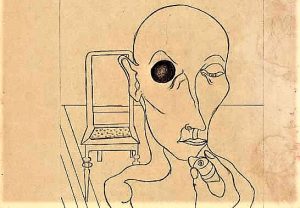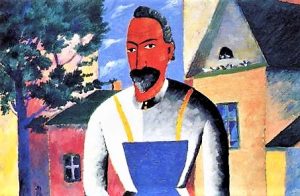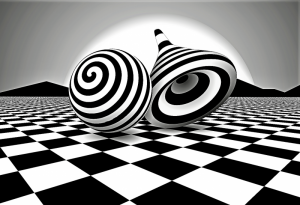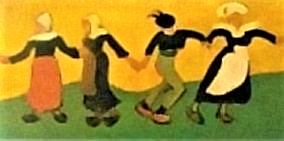Egyptian art
There is no doubt that ancient Egyptian art is one of the artistic manifestations that has most dominated modern humankind and has been recorded from ancient times. Egyptian art maintains a very close relationship with the medium in which it was presented. This type of art is governed by rules, so it is very similar in all its representations and has a tendency to be a little monotonous and homogeneous. Generally, it has great magical and symbolic significance, and brings together all the mythical and mysterious features that were present in ancient Egypt and its art history. This ancient civilization was able to form and elaborate a perfect type of architecture, its sculptures and paintings overflow mystery and beauty to get the immediate attention of art lovers. It was closely linked to Pharaoh and religion that prevailed at the time. For Egyptians, religion was a fundamental part of their art and culture. Being polytheists (they had many gods), the gods were the main foundation of art. The Egyptians created marvelous architectural works, monumental sculptures and paintings full of exuberant beauty, and, in addition, they catch the attention from the moment in which they joined the historical, mysterious, religious and mythical of the time.
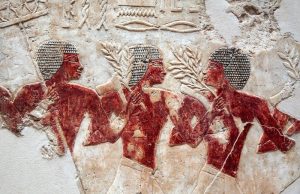
Related topics
Baroque art, Byzantine art, Greek art, Medieval art, Rock art, Roman art, Romanesque art
What is Egyptian art?
Egyptian art is one of the most important artistic manifestations in the world. With a close relationship between the magic and mystery that surrounded ancient Egypt, this type of art manages to captivate public's attention by unifying the historical, the mystery, the religious and mythical part of that period. Its perfect architecture overflows with intrigue and beauty attracting the attention of art and history lovers.
Egyptian art Characteristics
Some of the most outstanding features of Egyptian art are the following:
 It was an art created exclusively for the Pharaoh, the State and religion. The larger figures represented the importance of the characters they were representing.
It was an art created exclusively for the Pharaoh, the State and religion. The larger figures represented the importance of the characters they were representing.- Egyptian art always tried to transmit all its messages in a simple and understandable way. His sculptures had no expression and were mainly a representation of rigidity.
- It was full of anti-naturalism because it did not want to represent reality.
- It was an art that sought perfection and symmetry in all its aspects.
- They preferred to work in stone rather than any other material.
- Their architecture was for spiritual purposes and mainly highlighted the pre-eminence of the pharaoh and the Egyptian pantheon.
- Regarding the colors used, the Egyptians used uniform colors that used to have a symbolic character.
Egyptian sculpture
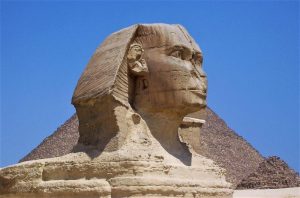 This type of sculpture focuses mainly on funerary aspects of Egyptian people. Most of the sculptures that have been found by scientists were found in Pharaonic tombs, some of them are even an authentic portrait of their deceased. This type of sculpture does not present any kind of sentimental expression in its factions nor any type of movement. The sculptures were designed to be admired from the front and were usually placed side by side in a continuous way. The importance of the sculpture for the people was determined by the size of the sculpture. Some of them were of great size, like, for example, Ramses’ statue in Abu Simbel, although also some others of small size can be found, even some with only a few centimeters of height. Some of these small statues have even been found inside mummy bandages, as they considered that they provided extra protection for their dead people as they functioned as amulets or protective spells.
This type of sculpture focuses mainly on funerary aspects of Egyptian people. Most of the sculptures that have been found by scientists were found in Pharaonic tombs, some of them are even an authentic portrait of their deceased. This type of sculpture does not present any kind of sentimental expression in its factions nor any type of movement. The sculptures were designed to be admired from the front and were usually placed side by side in a continuous way. The importance of the sculpture for the people was determined by the size of the sculpture. Some of them were of great size, like, for example, Ramses’ statue in Abu Simbel, although also some others of small size can be found, even some with only a few centimeters of height. Some of these small statues have even been found inside mummy bandages, as they considered that they provided extra protection for their dead people as they functioned as amulets or protective spells.
Egyptian painting
The painting that was developed in Ancient Egypt was based mainly on the representation of funerary and religious acts. His paintings were elaborated with natural pigments. They extracted pigments from the ochre floor to create different colors by forming a paste that was later mixed with egg whites and water in order to apply them directly to the walls and then placed layers of plaster to offer protection. Colors such as white, black, yellow and brick red were common to see, as well as different tones of green, yellow and malachite.
The paintings they elaborated were used mainly to put decorations on the mural walls of their temples and above all in their tombs. Among the techniques used by the Egyptians, we can mention the fresco painting, which was obtained from mixtures with different pigments and then placed on humid walls. They used bright and striking colors, they liked to make different mixtures of colors in each scene they wanted to represent. Among the oldest paintings from the Egyptian people we can mention the decorative wall paintings full of polychromies and uniform colors.
How to cite this article?
Briceño V., Gabriela. (2019). Egyptian art. Recovered on 4 May, 2025, de Euston96: https://www.euston96.com/en/egyptian-art/
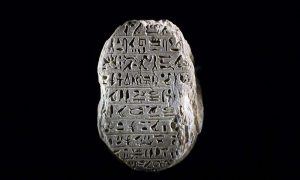 It was an art created exclusively for the Pharaoh, the State and
It was an art created exclusively for the Pharaoh, the State and 


